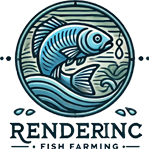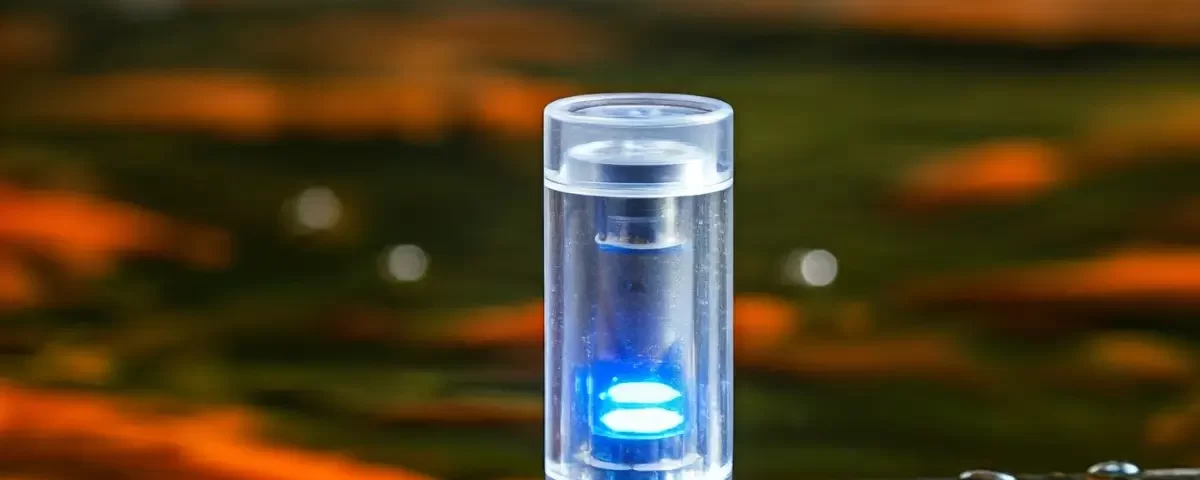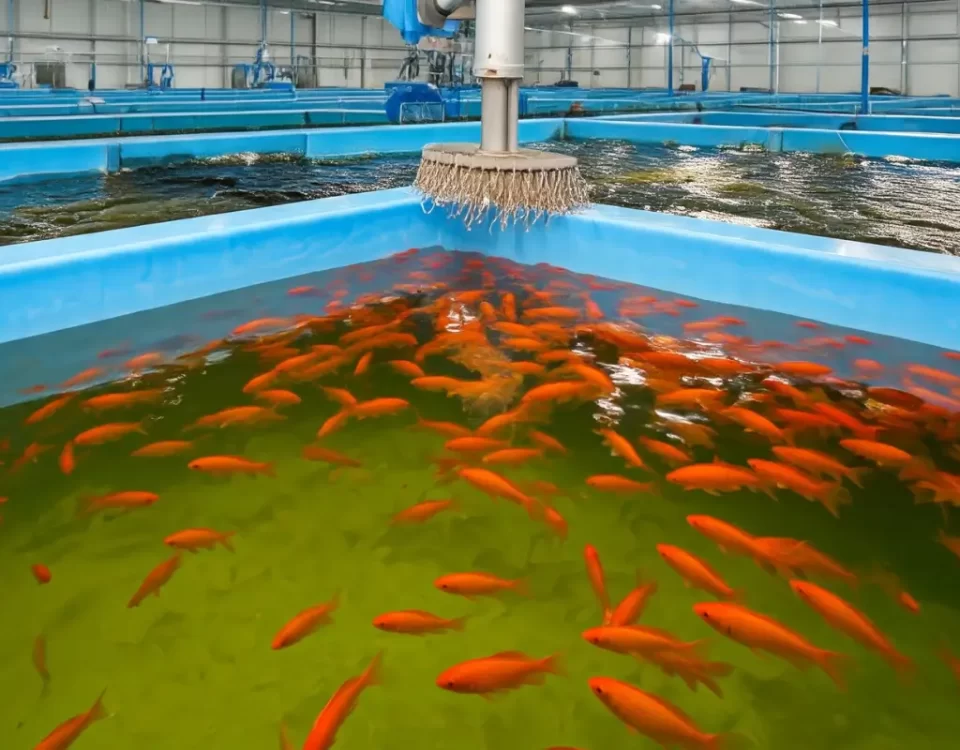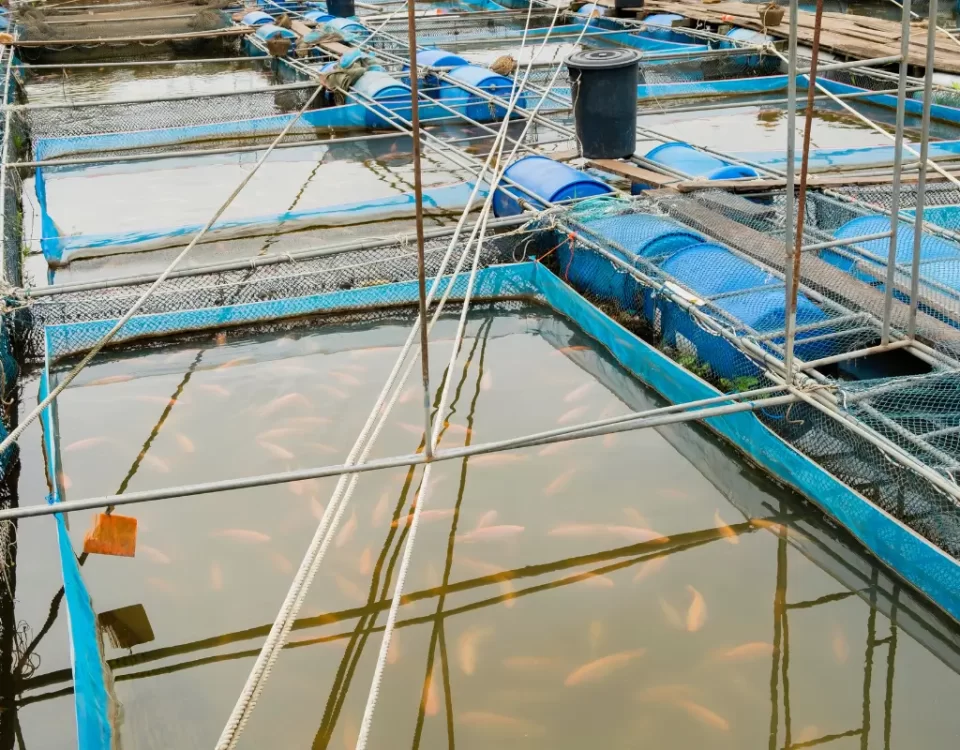Smart Sensors in Aquaculture: Monitoring Fish Health and Water Quality

How to Monitor Fish Growth and Optimize Production
agosto 22, 2024
Step-by-Step Guide to Building Your Own Fish Farm
agosto 22, 2024In the dynamic realm of aquaculture, the monitoring of fish health and water quality stands paramount in ensuring sustainable operations and optimal productivity. With aquaculture serving as a critical source of seafood production to meet the increasing global demand, maintaining a conducive environment for fish growth and well-being is crucial. The balance between thriving fish populations and pristine water quality is a delicate dance that necessitates constant vigilance and oversight.
The advent of smart sensors has heralded a new era in aquaculture management, offering real-time insights and data-driven solutions to challenges that have long plagued the industry. These sophisticated devices possess the capability to monitor a plethora of crucial parameters such as dissolved oxygen levels, pH, temperature, and ammonia concentrations with unprecedented accuracy and precision. By integrating these smart sensors into aquaculture systems, fish farmers can proactively track changes in their aquatic ecosystems and respond swiftly to any deviations or anomalies, mitigating potential risks before they escalate.
Importance of Monitoring Fish Health
Monitoring the health of fish within aquaculture setups goes beyond just ensuring profitability; it is a moral imperative to provide humane conditions for aquatic species. Early detection of diseases or stress factors is key to preventing outbreaks that can have devastating consequences on fish populations. By employing smart sensors capable of monitoring vital signs such as fish behavior, oxygen saturation levels, and water temperature, aquaculturists can intervene swiftly and effectively to bolster the well-being of their aquatic charges.
Significance of Ensuring Water Quality
Water quality serves as the lifeblood of aquaculture, directly influencing fish health and growth rates. Factors such as nutrient levels, pH fluctuations, and the presence of contaminants can all impact the delicate balance of an aquaculture system. Through the continuous monitoring of water quality parameters using advanced smart sensors, fish farmers can uphold optimal conditions for their aquatic residents, promoting robust growth and minimizing the risk of disease outbreaks.
As the aquaculture industry continues to evolve and expand to meet the demands of a growing population, the integration of smart sensors represents a decisive shift towards more sustainable and efficient practices. By harnessing the power of data analytics and real-time monitoring, fish farmers can navigate the complexities of modern aquaculture with greater precision and foresight, ultimately ensuring the continued success and viability of the industry.
The Need for Monitoring in Aquaculture
In the dynamic world of aquaculture, where the well-being of aquatic organisms and the quality of water are paramount, the significance of monitoring fish health and water quality cannot be overstated. Fish farmers rely on a delicate balance of environmental factors to ensure the thriving of their aquatic stock, making real-time monitoring essential to preempt potential issues and maintain ideal conditions for growth and vitality.
Importance of Monitoring Fish Health and Water Quality
Fish health monitoring serves as a proactive measure to detect early signs of disease, stress, or suboptimal conditions within aquaculture systems. Timely identification allows for prompt intervention, reducing the risk of disease outbreaks and minimizing economic losses. Moreover, monitoring water quality parameters such as temperature, dissolved oxygen levels, pH, and ammonia concentration is crucial for ensuring a healthy aquatic environment. Fluctuations in these parameters can have detrimental effects on fish physiology and growth, making continuous monitoring indispensable for sustainable aquaculture practices.
Risks and Challenges in Maintaining Optimal Conditions
As fish farmers strive to maintain optimal conditions for their aquatic species, they face an array of risks and challenges that can impact the overall health and productivity of their stock. One of the primary challenges lies in the complex interplay between various environmental factors, where unexpected changes can lead to stress and vulnerability in fish populations. For instance, fluctuations in water temperature beyond tolerable limits can compromise immune function and increase susceptibility to diseases.
Technology and Smart Sensors
To address these challenges, advancements in technology have paved the way for the integration of smart sensors in aquaculture systems. Smart sensors offer real-time data monitoring capabilities, allowing fish farmers to track crucial parameters with precision and efficiency. These sensors can provide insights into water quality trends, fish behavior, feeding patterns, and growth rates, enabling informed decision-making and proactive intervention when deviations occur. By harnessing the power of technology, fish farmers can optimize their aquaculture operations, minimize risks, and enhance the overall sustainability of their practices.
In conclusion, the proactive monitoring of fish health and water quality is fundamental to the success of modern aquaculture. By leveraging smart sensors and technology-driven solutions, fish farmers can overcome challenges, mitigate risks, and ensure the well-being of their aquatic stock. Continuous vigilance and data-driven decision-making are essential pillars of sustainable aquaculture practices, driving innovation and progress in the quest for healthier, more efficient fish farming operations.
Traditional Monitoring Methods vs. Smart Sensors
Aquaculture has long relied on traditional monitoring methods to assess fish health and water quality. These methods, such as manual observation and periodic water sampling, have been the cornerstone of aquaculture management. However, the advancements in technology have revolutionized the way we monitor aquaculture systems. Smart sensors have emerged as powerful tools that offer significant advantages over traditional methods.
Comparison between Traditional Monitoring Methods and Smart Sensors
Traditional monitoring methods often involve labor-intensive tasks and are prone to human error. Manual observation of fish behavior and visual inspection of water quality parameters can be subjective and time-consuming. In contrast, smart sensors are automated devices that continuously collect and analyze data in real-time. They provide accurate and precise measurements, reducing the risk of inaccuracies associated with manual methods.
Smart sensors offer a wide range of benefits compared to traditional monitoring methods. They provide real-time data on key parameters such as water temperature, dissolved oxygen levels, pH, and ammonia concentrations. This continuous monitoring allows for early detection of any potential issues, enabling prompt intervention to maintain fish health and water quality. Additionally, smart sensors can be programmed to send alerts or notifications when parameters deviate from optimal levels, providing aquaculturists with timely information to make informed decisions.
Limitations of Traditional Methods and the Advantages of Smart Sensors
One of the main limitations of traditional monitoring methods is their reactive nature. Periodic water sampling and manual observations may not capture sudden changes in water quality or fish behavior. This reactive approach can lead to delayed responses to problems, increasing the risk of adverse effects on fish health and overall production. On the other hand, smart sensors offer a proactive monitoring solution by continuously monitoring key parameters and providing real-time data. This proactive approach allows aquaculturists to anticipate potential issues and take preventive measures.
In conclusion, while traditional monitoring methods have been reliable in the past, the adoption of smart sensors in aquaculture represents a significant advancement in monitoring practices. Smart sensors offer enhanced accuracy, real-time data, and proactive monitoring, providing aquaculturists with valuable insights to optimize fish health and water quality in aquaculture systems. By leveraging the power of smart sensors, aquaculturists can improve production efficiency, minimize risks, and ensure sustainable aquaculture practices.
Types of Smart Sensors Used in Aquaculture
Innovations in technology have revolutionized the aquaculture industry, allowing fish farmers to monitor fish health and water quality with unprecedented precision and efficiency. Smart sensors play a crucial role in this advancement, providing real-time data on key parameters to ensure optimal conditions for fish growth and well-being. Let’s delve into the different types of smart sensors commonly used in aquaculture and how they enhance monitoring efforts.
Water Quality Monitoring Sensors
Water quality is paramount in aquaculture operations, as it directly impacts fish health and growth. Smart sensors designed to monitor water quality parameters such as temperature, dissolved oxygen, pH, and ammonia levels are essential tools for fish farmers.
- Temperature Sensors: These sensors measure water temperature to ensure it remains within the optimal range for the specific fish species being raised. Sudden fluctuations can stress or even harm the fish.
- Dissolved Oxygen Sensors: Monitoring dissolved oxygen levels is critical, as insufficient oxygen can lead to fish suffocation. These sensors alert farmers to any drop in oxygen levels, prompting timely intervention.
- pH Sensors: Maintaining the pH balance is crucial for fish health and the overall aquatic environment. pH sensors help farmers detect and correct any deviations from the optimal range.
- Ammonia Sensors: Ammonia is a byproduct of fish waste and uneaten feed, and high levels can be toxic to fish. Monitoring ammonia levels with sensors is vital to prevent potential harm to the aquatic ecosystem.
Fish Health Monitoring Sensors
Beyond water quality, smart sensors are also instrumental in monitoring fish health. These sensors can detect a wide range of indicators, including behaviors, growth rates, and disease outbreaks, enabling farmers to proactively address any issues that may arise.
- Behavior Monitoring Sensors: By tracking fish behaviors such as swimming patterns and feeding activity, sensors can provide insights into the overall health and well-being of the fish. Any abnormal behavior patterns can indicate potential health issues.
- Growth Rate Sensors: Monitoring the growth rates of fish is essential for assessing their overall health and the efficacy of feeding regimes. Smart sensors can track growth trends accurately over time.
- Disease Outbreak Detection Sensors: Early detection of disease outbreaks is crucial in aquaculture to prevent widespread harm to the fish population. Smart sensors equipped with disease detection algorithms can signal the presence of pathogens, allowing for prompt intervention.
In conclusion, the integration of smart sensors in aquaculture operations has transformed the way fish health and water quality are monitored, enabling farmers to make informed decisions promptly. By leveraging the capabilities of these advanced sensors, aquaculture professionals can enhance productivity, minimize risks, and ensure the sustainable growth of their operations.
Benefits of Smart Sensors in Aquaculture
Smart sensors have revolutionized the way fish farmers monitor their aquaculture operations, offering a plethora of benefits that enhance productivity and ensure the sustainability of their ventures. These cutting-edge devices play a crucial role in monitoring fish health and water quality, providing real-time data that empowers farmers to make informed decisions swiftly.
Increased Productivity and Reduced Costs
One of the significant benefits of incorporating smart sensors in aquaculture is the boost in productivity they offer. By continuously monitoring essential parameters such as water temperature, dissolved oxygen levels, and pH, fish farmers can ensure optimal conditions for their stock, leading to healthier and faster-growing fish. This optimized environment results in higher yields and improved overall production efficiency. Additionally, the automation of tasks through smart sensors reduces the need for manual labor, cutting down on operational costs.
Improved Efficiency and Sustainability
Smart sensors have significantly enhanced the efficiency and sustainability of aquaculture operations. By constantly monitoring water quality parameters, these sensors allow farmers to detect any deviations from the ideal conditions promptly. This early detection enables proactive measures to be taken, preventing potential issues such as disease outbreaks or oxygen depletion, thus ensuring the well-being of the fish and the ecosystem. Moreover, by maintaining optimal conditions, farmers can minimize resource wastage and reduce the environmental impact of their operations.
Informed Decision-Making and Preventive Measures
Data collected by smart sensors play a critical role in enabling fish farmers to make informed decisions and implement preventive measures effectively. By analyzing the real-time data provided by these sensors, farmers can gain valuable insights into the performance of their aquaculture systems. This data-driven approach allows for the identification of trends, early warning signs of potential issues, and opportunities for optimization. With this information at their fingertips, farmers can proactively adjust their management practices to maximize productivity and mitigate risks, ultimately leading to more successful and sustainable aquaculture operations.
By harnessing the power of smart sensors in aquaculture, fish farmers can not only streamline their operations and enhance productivity but also contribute to the overall sustainability of the industry. The combination of real-time monitoring, data-driven decision-making, and proactive measures ensures that aquaculture operations can thrive in a rapidly changing environment while maintaining a focus on environmental stewardship and fish welfare.
Case Studies: Success Stories of Smart Sensors in Aquaculture
In the realm of aquaculture, the integration of smart sensor technology has revolutionized the way fish health and water quality are monitored and managed. Let us delve into some compelling case studies that highlight the remarkable success stories of aquaculture facilities that have harnessed the power of smart sensors to elevate their operations to new heights.
Sustainable Salmon Farming in Norway
One exemplary case comes from a salmon farming facility in Norway that deployed a network of advanced smart sensors throughout their operations. By leveraging these sensors to continuously monitor crucial parameters such as dissolved oxygen levels, pH, and temperature, the farm was able to gain invaluable insights into the environmental conditions within their fish pens. This real-time data not only enabled the facility to swiftly detect and respond to any deviations but also facilitated proactive measures to optimize their fish health management practices.
Enhanced Water Quality Control in Shrimp Farms
Another noteworthy success story emerges from a series of shrimp farms in Southeast Asia that adopted smart sensors to bolster their water quality control mechanisms. By integrating sensors that measured ammonia levels, turbidity, and nitrate concentrations, these farms attained a newfound precision in monitoring the health of their aquatic ecosystem. Through meticulous analysis of the sensor data, the farms could swiftly identify and rectify any issues that might compromise water quality, thereby safeguarding the well-being of their shrimp population.
Increased Efficiency and Cost Savings in Aquaponics System
In a different context, an aquaponics facility in the United States implemented smart sensor technology to streamline their operations and maximize resource efficiency. By installing sensors to monitor key parameters such as nutrient levels, water flow rates, and light intensity, the facility could fine-tune their aquaponics system for optimal performance. The insights derived from sensor data analysis not only optimized fish health and plant growth but also led to significant cost savings through precise resource allocation and reduced waste.
Empowering Aquaculture Through Data-driven Decision-Making
Across these diverse case studies, one common thread emerges: the transformative impact of smart sensors in empowering aquaculture facilities to make informed, data-driven decisions. By harnessing the wealth of real-time sensor data at their disposal, these facilities have not only bolstered fish health management and water quality control but have also reaped substantial returns on investment through enhanced efficiency, sustainability, and productivity.
The future of aquaculture undoubtedly lies in the seamless integration of smart sensor technology, paving the way for a more resilient, innovative, and sustainable industry.
Challenges and Future Trends in Smart Sensor Technology
The implementation of smart sensors in aquaculture presents an array of challenges that need to be addressed to truly reap the benefits of advanced monitoring capabilities. One of the primary hurdles is the cost associated with acquiring and deploying smart sensor systems. While these sensors offer valuable insights into fish health and water quality, the initial investment can be significant for many fish farms. Additionally, the technical know-how required to set up and maintain these sensors can be daunting for those without a background in technology.
Cost and Technical Expertise
The cost of smart sensor technology remains a major obstacle for widespread adoption in aquaculture. From purchasing the sensors themselves to integrating them into existing aquafarming infrastructure, the financial investment can deter some farmers from taking the leap. Furthermore, the expertise needed to configure and troubleshoot these sensors can be a barrier, as not all aquaculture professionals possess the technical skills required to maximize the potential of these devices.
Future Trends in Sensor Technology
Looking ahead, the future of smart sensor technology in aquaculture is brimming with exciting possibilities. Innovations in sensor design and functionality are continuously pushing the boundaries of what these devices can achieve. Future sensors may be smaller, more accurate, and capable of detecting a wider range of parameters related to fish health and water quality. These advancements could revolutionize how fish farms monitor and manage their operations, leading to improved efficiency and sustainability.
Integration of Artificial Intelligence and Machine Learning
One of the most promising trends in smart sensor technology is the integration of artificial intelligence (AI) and machine learning (ML) algorithms. By leveraging AI and ML, smart sensors can analyze vast amounts of data in real time, providing insights and predictions that would be impossible to generate manually. These technologies have the potential to optimize feeding schedules, detect early signs of disease outbreaks, and even autonomously adjust water quality parameters to ensure optimal conditions for fish growth. As AI and ML capabilities continue to advance, the future of smart sensors in aquaculture looks incredibly promising.
The utilization of smart sensors in the field of aquaculture has revolutionized the way fish health and water quality are monitored. Throughout this article, we have delved into the intricacies of how smart sensor technology has enhanced the efficiency and effectiveness of aquaculture practices.
By implementing smart sensors, fish farmers can now monitor various parameters in real time, such as temperature, dissolved oxygen levels, and pH, providing a comprehensive understanding of the aquatic environment. This real-time data not only aids in early detection of potential issues but also allows for timely intervention to maintain optimal conditions for fish growth and health.
The transformative impact of smart sensors on aquaculture cannot be understated. Not only do they streamline monitoring processes, but they also significantly reduce the risk of disease outbreaks and environmental degradation. By enabling precise control over water parameters, smart sensors pave the way for sustainable aquaculture practices that prioritize fish welfare and environmental stewardship.
To fish farmers seeking to enhance their operations and maximize productivity, the adoption of smart sensor technology is highly recommended. Embracing innovation in aquaculture through smart sensors not only ensures better monitoring of fish health and water quality but also holds the key to achieving sustainable and efficient aquaculture practices for the future.

Michael Rivers is an experienced aquaculture enthusiast with over a decade of hands-on knowledge in fish farming and sustainable aquatic systems. Passionate about promoting eco-friendly practices, he shares his expertise on fish breeding, water management, and the latest advancements in aquaculture technology. Through his blog, Michael aims to help both beginners and seasoned fish farmers achieve success in their ventures while contributing to the growth of sustainable food production.




